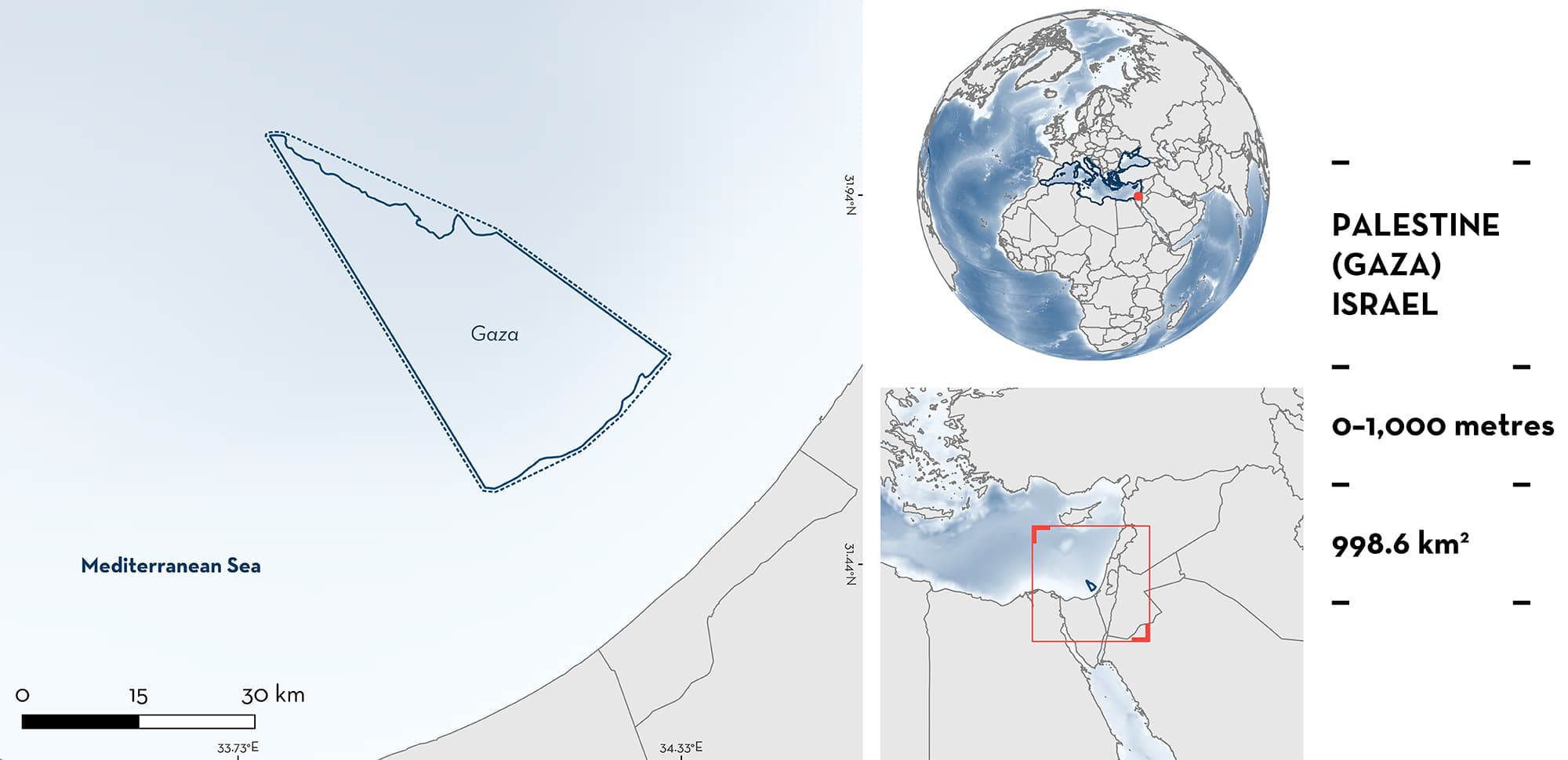ISRA FACTSHEETS
ISRA FACTSHEETS
MEDITERRANEAN AND BLACK SEAS REGION
Gaza
Summary
Gaza is located off the coast of the Gaza Strip, Palestine in the eastern Mediterranean Sea. The area is influenced by the Libyan–Egyptian current, and the surface current flowing eastward along the continental slope off Egypt and then northward along Israel and Lebanon. Within this area there are: threatened species and undefined aggregations (Spinetail Devil Ray Mobula mobular).
Download factsheet
Gaza
DESCRIPTION OF HABITAT
Gaza is located off the coast of the Gaza Strip, Palestine in the eastern Mediterranean Sea. Off the coast of Gaza, the seabed drops quickly beyond the depth of 100 m (Ubeid 2011). The area is influenced by both the Libyan–Egyptian current, as well as the surface current flowing eastward along the continental slope off Egypt and northward along Israel and Lebanon (Taupier-Letage et al. 2007).
This Important Shark and Ray Area is benthopelagic and is delineated from inshore and surface waters (0 m) to 1,000 m based on the depth range of Qualifying Species in the area.
This Important Shark and Ray Area is delineated from surface waters to a depth of 40 m in pelagic waters based on the maximum depth range of the habitat used by the Qualifying Species.
CRITERION A
VULNERABILITY
The one Qualifying Species within the area is considered threatened with extinction according to the IUCN Red List of Threatened SpeciesTM. The Spinetail Devil Ray is assessed as Endangered (Marshall et al. 2022).
CRITERION C
SUB-CRITERION C5 – UNDEFINED AGGREGATIONS
Gaza is an important aggregation area for one ray species.
Spinetail Devil Rays undergo a seasonal migration from the broader Mediterranean Sea region to the southeast corner of this body of water (Notarbartolo di Sciara et al. 2015). Results from a satellite tagging study confirm these west-to-east movements during the boreal winter and the beginning of spring (Notarbartolo di Sciara pers. comm. 2023). Spinetail Devil Rays have been observed frequenting this area since at least the 1970s for a narrow time window from February to April (Abudaya et al. 2018). Most of the catch data for the species in this region originates from Gaza, with up to 370 rays caught in one year (Abudaya et al. 2018; Neri et al. 2022). Over 90% of landed male specimens had sperm oozing from their claspers (Abudaya et al. 2018), suggesting potential importance of the area for reproduction. Spinetail Devil Ray landings between 2014–2016 had a female to male ratio of 8.8/100, and it is unclear why females are so low in the catch. The temporal coincidence of the presence of the Spinetail Devil Ray in this area in late winter and early spring, and with evidence of breeding physiology, support the hypothesis that the Spinetail Devil Ray seasonally migrates to the area for breeding purposes, however more data are needed to confirm the nature of this aggregation.
Download factsheet
SUBMIT A REQUEST
ISRA SPATIAL LAYER REQUEST
To make a request to download the ISRA Layer in either a GIS compatible Shapefile (.shp) or Google Earth compatible Keyhole Markup Language Zipped file (.kmz) please complete the following form. We will review your request and send the download details to you. We will endeavor to send you the requested files as soon as we can. However, please note that this is not an automated process, and before requests are responded to, they undergo internal review and authorization. As such, requests normally take 5–10 working days to process.
Should you have questions about the data or process, please do not hesitate to contact us.


